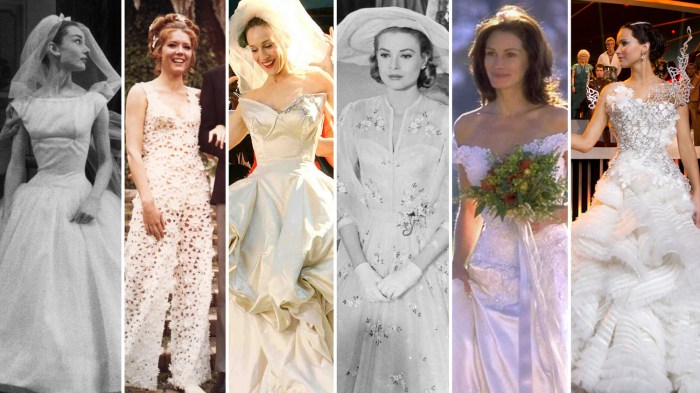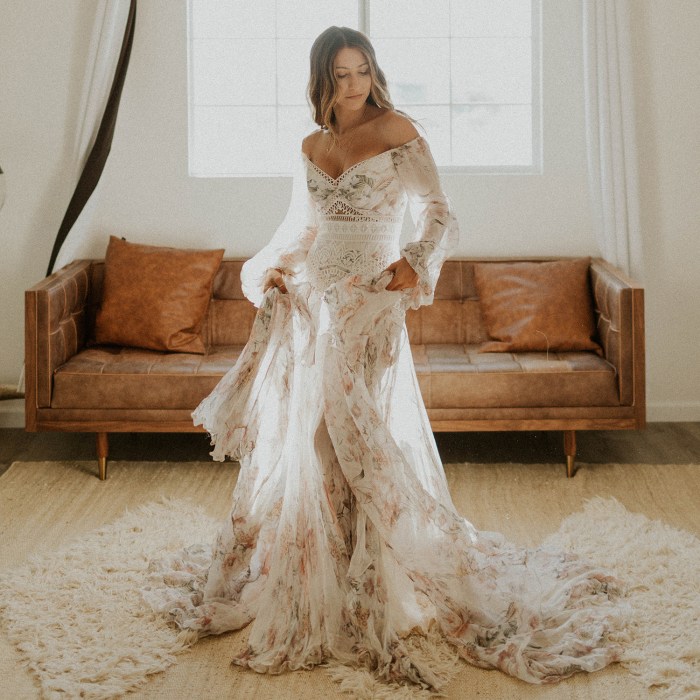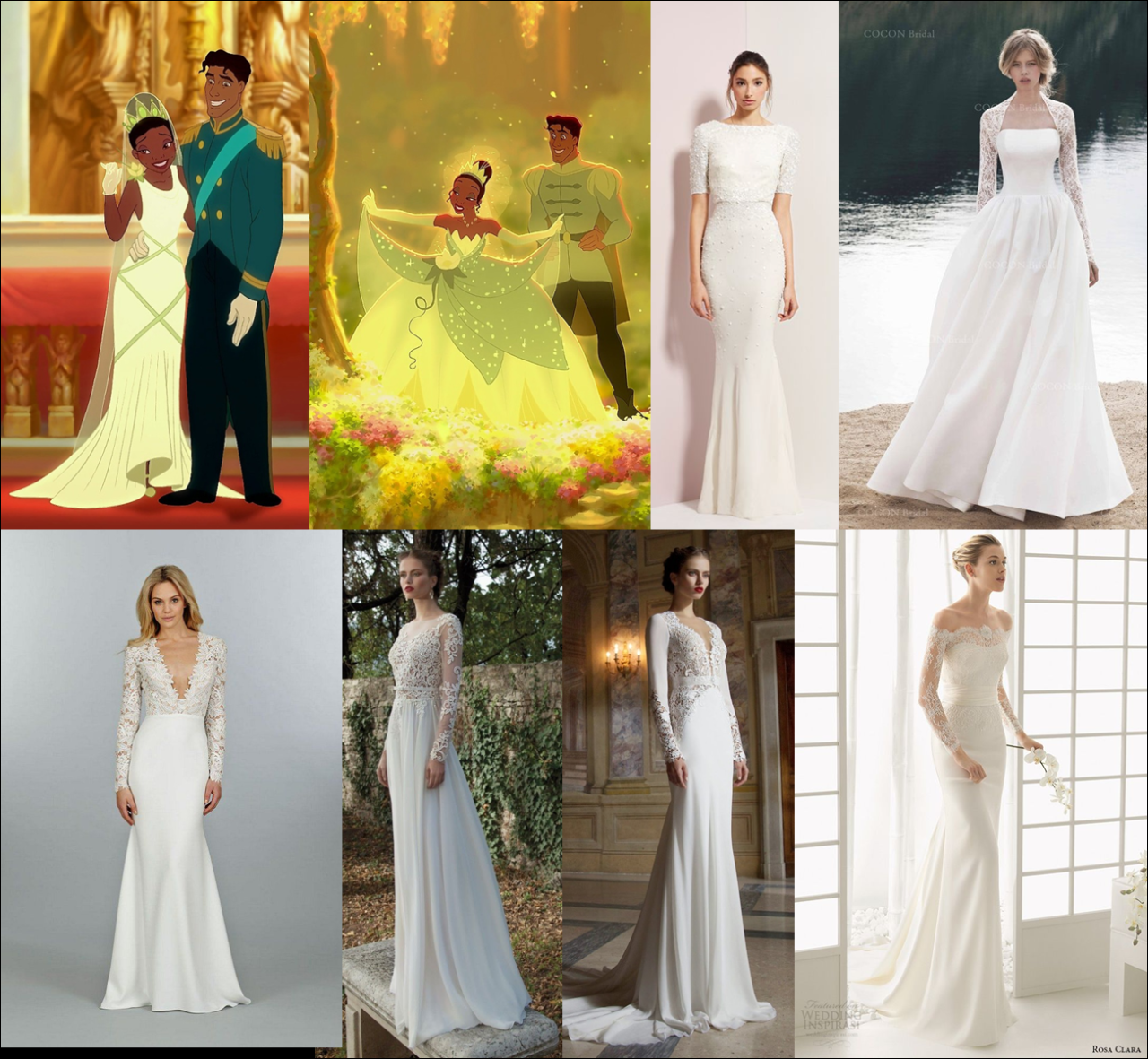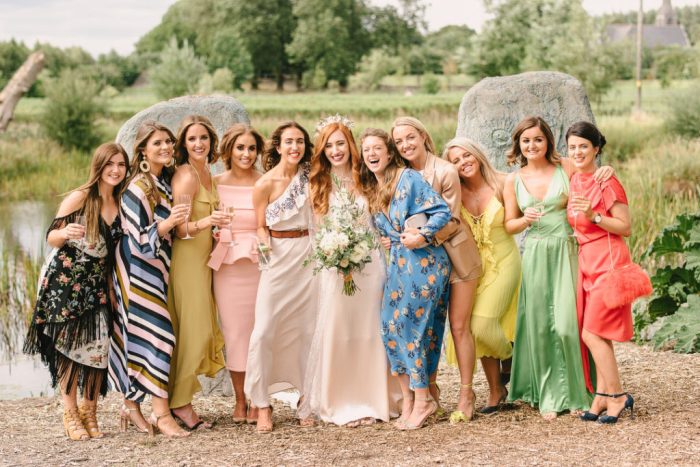The History of Wedding Dress Colors: Before the Reign of White: What Color Were Wedding Dresses Before White
What color were wedding dresses before white – For centuries, the color white wasn’t the ubiquitous choice for wedding attire. The tradition of the white wedding dress is a relatively recent phenomenon, largely influenced by Queen Victoria’s choice in the 19th century. Before then, a vibrant spectrum of colors adorned brides, reflecting diverse cultural practices, social standings, and symbolic meanings.
Pre-Victorian Era Wedding Attire
Before the 1800s, wedding gowns reflected the available fabrics and prevailing cultural norms of the time. Color choices were far more diverse, and the significance of a wedding gown’s color varied significantly across different social classes and geographic regions.
| Period | Common Colors | Fabrics | Social Significance |
|---|---|---|---|
| Medieval (c. 5th-15th centuries) | Deep reds, blues, greens, and browns | Wool, linen, silk (for the wealthy) | Colors often reflected the wearer’s social standing and availability of resources; vibrant colors signified wealth and status. |
| Renaissance (c. 14th-16th centuries) | Rich jewel tones: crimson, gold, deep blues, purples | Velvet, brocade, silk | Elaborate gowns symbolized prosperity and reflected the lavishness of the era. Color choices often reflected the season. |
| Georgian Era (c. 1714-1837) | Silver, pastels, and darker colors like deep reds and blues | Silk, satin, lace | Colors reflected fashion trends and social status. Elaborate fabrics and embellishments were common among the wealthy. |
The Evolution of White as a Wedding Dress Color

Source: co.uk
Queen Victoria’s choice of a white gown for her 1840 wedding to Prince Albert was a pivotal moment. While not entirely unprecedented, her selection, coupled with her immense influence and the widespread media coverage of the event, propelled white to the forefront of bridal fashion.
Several factors contributed to her decision. White symbolized purity and innocence, aligning with the Victorian ideal of female virtue. The choice also showcased the Queen’s wealth, as only the affluent could afford the expensive, pristine white fabric. The impact was immediate and lasting, setting a trend that continues to this day.
The association of white with purity and innocence solidified its position as the preferred wedding dress color. This association, reinforced by Victorian-era ideals and subsequent cultural interpretations, became deeply ingrained in wedding traditions worldwide.
A timeline illustrating this shift would show a gradual increase in the popularity of white, beginning with Queen Victoria’s wedding and accelerating throughout the late 19th and 20th centuries, eventually overshadowing all other colors.
Regional Variations in Wedding Dress Color Before White Became Popular, What color were wedding dresses before white
Before white became the dominant color, regional traditions maintained diverse color preferences. These choices were often deeply rooted in cultural symbolism and beliefs.
- China: Red was, and remains, the traditional wedding color, symbolizing good fortune, prosperity, and happiness. Intricate embroidery and auspicious patterns further enhanced the garments.
- India: A wide array of colors were used, with the specific color often depending on the region and the bride’s family. Red, however, remains a popular choice, symbolizing fertility and good fortune. Other colors like gold and vibrant yellows also hold significance.
- Japan: Traditionally, brides wore several kimono during the wedding ceremony, often featuring colors like red and white. Red symbolized good luck, while white signified purity. The number and colors of the kimono would reflect the bride’s family’s social status.
The Symbolism of Color in Wedding Attire (Pre-White Era)

Source: carriesbridalcollection.com
Different colors held diverse symbolic meanings, influencing the choices of brides throughout history. These meanings often varied across cultures and social classes.
Red, for example, frequently symbolized fertility, passion, and good fortune in many cultures. Blue often represented fidelity, purity, or protection, while green symbolized hope, fertility, or new beginnings. The significance of other colors such as yellow (joy, wealth) or purple (royalty, wealth) also varied depending on the region and time period.
A hypothetical wedding gown from 16th-century Italy might be a deep crimson velvet gown, adorned with gold embroidery and intricate lace. The crimson would represent passion, wealth, and social standing, while the gold would further emphasize prosperity and the bride’s status within society.
Illustrative Examples of Non-White Wedding Dresses
Several examples illustrate the rich diversity of pre-white wedding attire.
Example 1: A vibrant red silk gown from 18th-century China, adorned with gold embroidery depicting auspicious symbols, reflecting the bride’s family’s prosperity and the cultural significance of red in Chinese weddings. The richness of the silk and the intricate embroidery showcase the bride’s status.
Example 2: A deep blue velvet gown from a 15th-century European noblewoman, embroidered with silver threads and adorned with pearls, symbolizing wealth, purity, and status. The use of velvet and the silver embroidery point to her high social standing.
Example 3: A saffron-colored silk gown from a 19th-century Indian bride, richly decorated with intricate gold embroidery and embellishments. The saffron color signifies purity and auspiciousness within the Hindu tradition, showcasing the bride’s devotion and the cultural richness of the ceremony.
FAQ Guide
What determined the color of a wedding dress before white became popular?
The color of a wedding dress was often determined by factors such as social status, availability of fabrics and dyes, and regional or cultural traditions. Wealthier brides could afford more luxurious fabrics and dyes, resulting in richer colors.
Were there specific colors associated with particular social classes?
Yes, often. Brighter, more vibrant colors were sometimes associated with wealthier classes, while simpler fabrics and more muted colors were common among those of lower social standing.
Why did the color white become associated with purity and innocence?
This association developed over time, with the influence of Queen Victoria’s white wedding gown playing a significant role. White also came to represent virtue and was linked to the Virgin Mary in religious contexts.
Are there any modern interpretations of pre-white wedding dress styles?
Yes, modern brides often incorporate elements of historical wedding attire into their gowns, sometimes including non-traditional colors and styles inspired by past eras.








